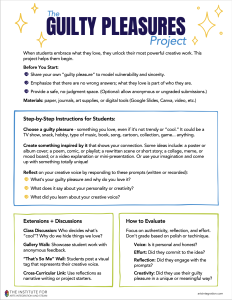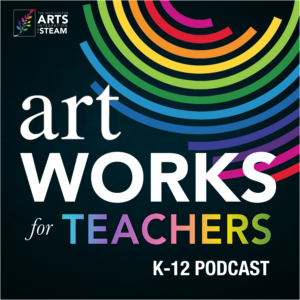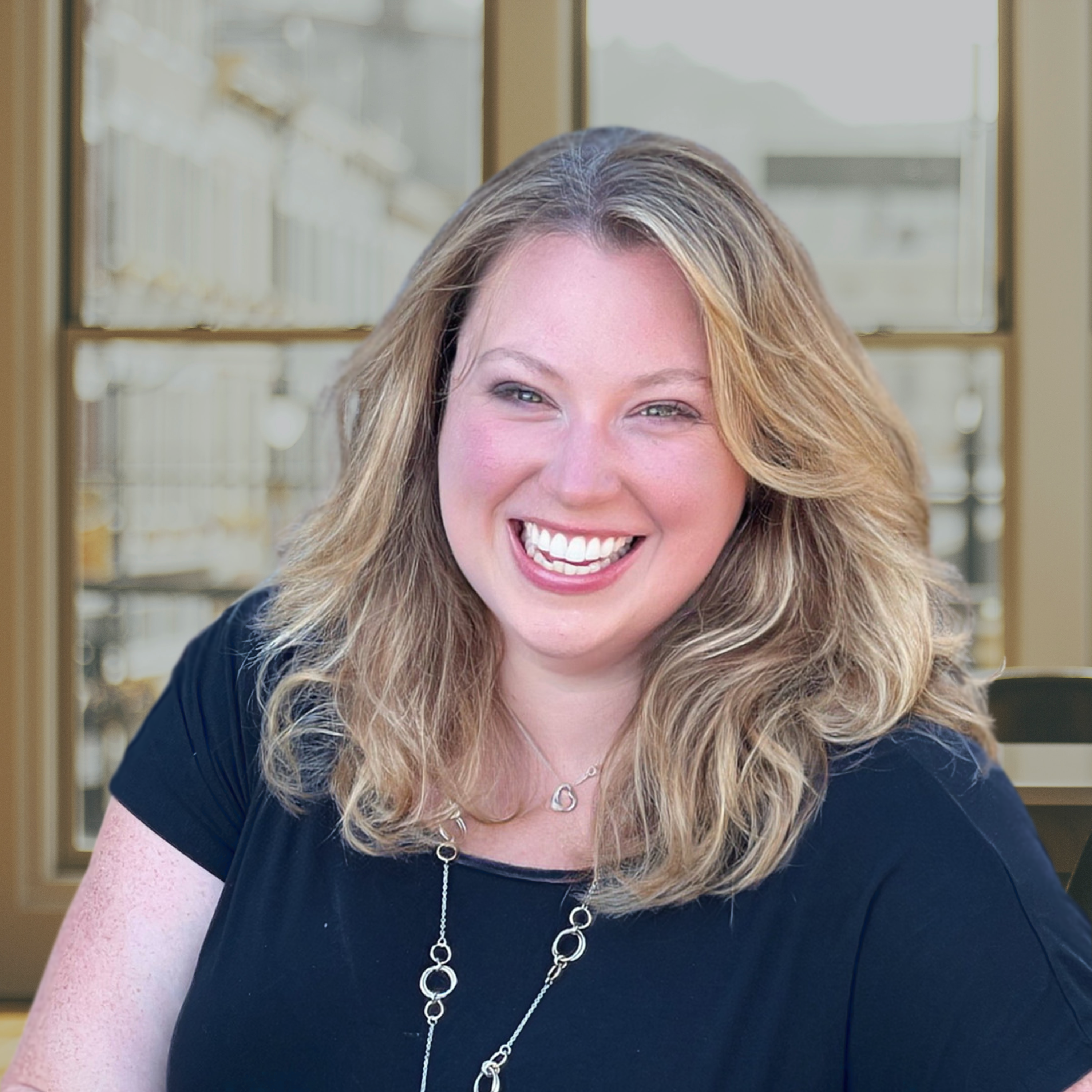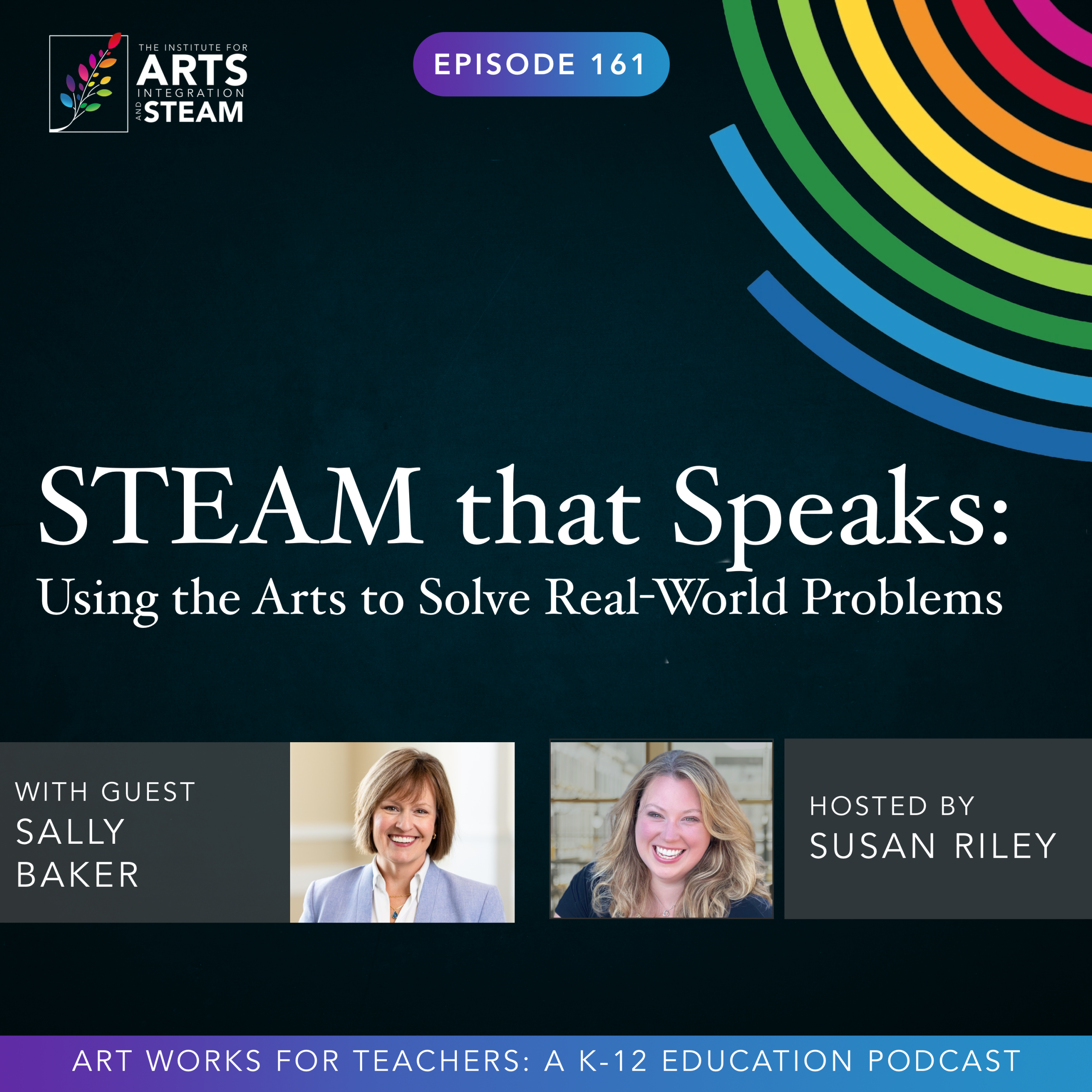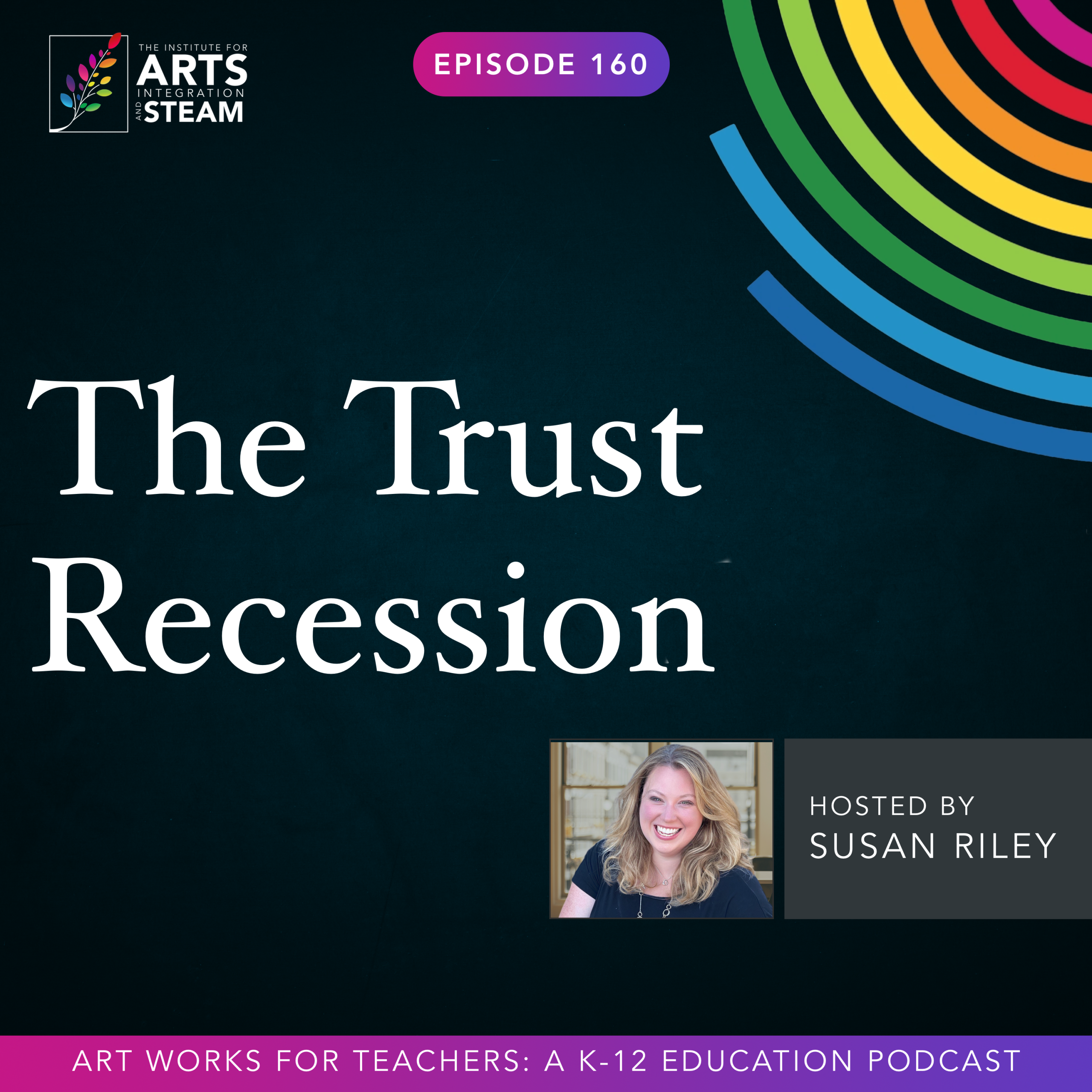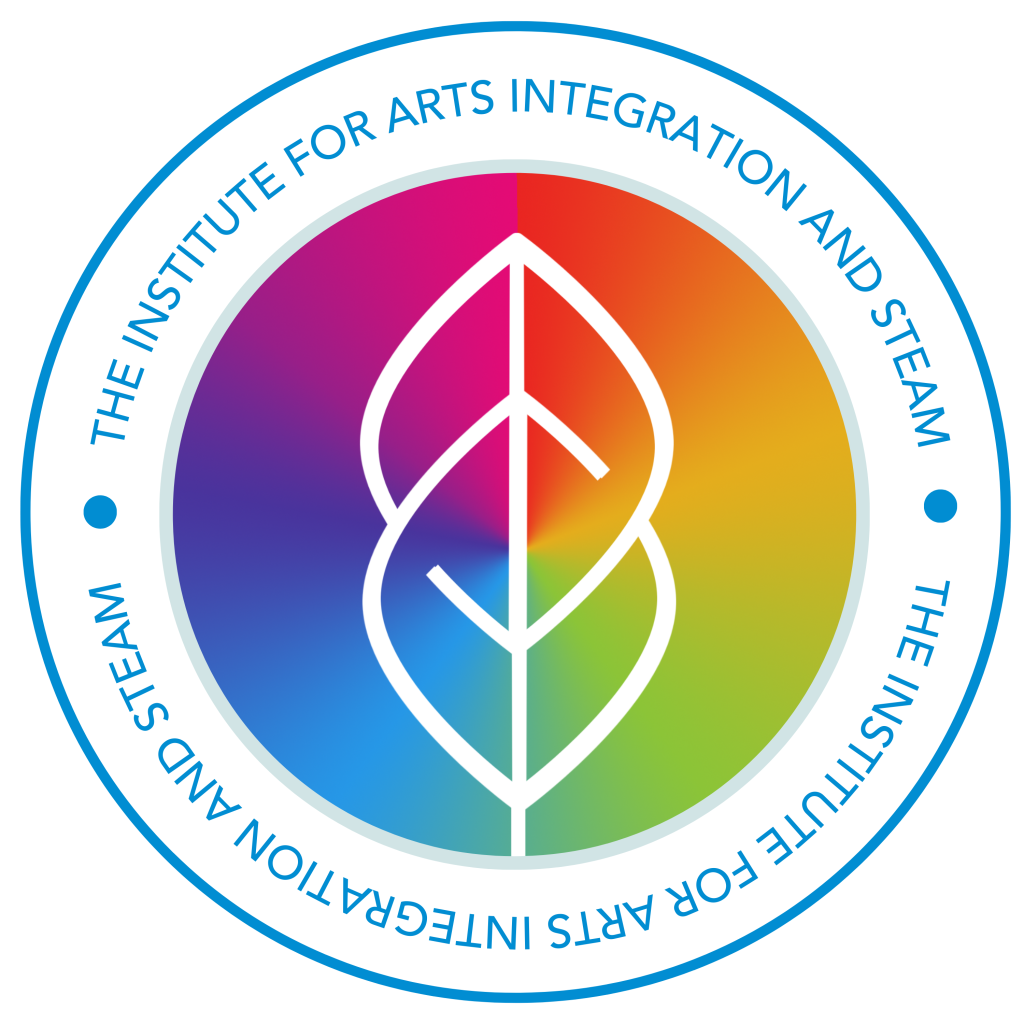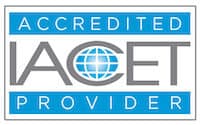ART WORKS FOR TEACHERS PODCAST | EPISODE 143 | 34:49 MIN
Creativity Isn't One-Size-Fits-All
Too many kids think they're "bad at art" when really, they just haven't been shown how to trust their own taste. Illustrator Andy J. Pizza unpacks how neurodiversity, guilty pleasures, and personal struggle can fuel breakthrough creativity… and why educators hold the key.
Enjoy this free download of the The Guilty Pleasures Project.
Susan
Hi, Andy, thank you so much for joining me today. Wonderful. So to kick things off, I always like to let our guests just tell us a little bit about themselves and their journey to where you've gotten to today.
Andy
Hey Susan, happy to be here. Yeah, so I'm an illustrator and I grew up like a lot of creative kids doing a lot of drawing, but also making fake radio shows and doing skits and videos and all that kind of thing. And then as you grow up, they're like, you need to focus on something. And so was like, all right, I'll be an illustrator. Cause I really liked doing that. And so I started doing that and then out of nowhere they're like, okay, now it's time you gotta make podcasts, you gotta make videos, you gotta do all this stuff if you wanna be an illustrator. I'm like, I don't wanna do that until I realize like, that's exactly what I wanted to do. What is a podcast other than a fake radio show and know, skits and all these videos we have to do? actually I'm kind of like, even though I find it overwhelming sometimes, I'm living my best life in the creative side of things. I'm doing all this stuff these days. So that's kind of how I got here.
Susan
Amazing. like, want to dive in. I like to go back into actual backstories. So what got you into illustration in the first place? How did you like discover this as your media?
Andy
Yeah, I think that, you know, growing up as an ADHD kid, drawing was a real self-soothing, kind of meditative practice. I think it was less of a passion, even though I liked doing it, but it was more like a necessity. It was just something that I think helped me to not be bored, self-regulate, that kind of thing. And, you know, I'd had like grownups in my life be like, you should go in animation or, you know, whatever, stuff like that. But I always kind of sensed like, I either I don't feel like I'm that good at this or I just can't imagine I knew like animators had these really long hours sitting in a chair I knew I can't do that and it wasn't until I got into high school and I discovered design-y illustration through indie music band posters merch all that kind of stuff that I started to think this is kind of like what I like which is a real aesthetic on making an image, telling a story. And I also had grown up pretty obsessed, probably more than normal with picture books and liked them way past I was the appropriate age range for them. And I still just love picture books. yeah, think that that kind of, it happened slowly. didn't initially think of myself as someone who was gonna pursue the arts professionally, but also, you know, even in high school, I remember in drawing class, not being the best at drawing at my table, you know, so I wasn't it. It took me a long time to realize like, the skill element of creativity isn't really the secret sauce. I think that for me, a better starting place is a really strong sensitivity and a strong sense of your taste. And I think that that ends up being more important in the long run. So I think getting into that indie music and that lo-fi scene and design, the cross-section of design and illustration, I think started to kick off the path to where I got now.
Susan
Yeah, and I think what you're talking about is creative identity, right? It's what influences your style and also who you are and how you approach the world, right? So with that in mind, with the idea around creative identity, other than kind of piecemealing it together, like I like a little bit of this, I like a little bit of that, how did you, because you're beyond an illustrator, right? You have the… I call it a multi-passionate, like, here's all the things that you do, right? How does that all influence your creative identity and how does your creative identity then influence how you navigate the world?
Andy
Yeah, you know, I wanna go back to what you said about piecemealing what you wanna do. I think that that's actually a great place to start. I think the problem is we don't know what to do from there. Like we have an idea of like, these are my influences. I know I like this stuff. I know I like it so much that I'd like to participate in this direction, but then there's not a lot of instruction, at least when I was starting, I couldn't find instruction about like, okay, what's the next step after loving art? Like, what do you do after that? And I think for me, it goes back to that sensitivity. And I would encourage people to try to develop a sense of what their super taste is. And so, you know, I love, Ira Glass talks about the host of This American Life. talks about this idea. There was a viral video in like probably the early 2010s. And it was about bridging the gap between your taste and your skill set. And it was a huge, you know, it a huge thing. And it was all about like, you get into art because you have good taste or you have a sense of your taste. And then you start making stuff, but your skills aren't good enough.
And so, you know what you're making isn't good, because you have that taste. And so, the whole video is really about sticking to it, developing your skills. But the thing that blew my mind that I never heard anybody talk about is that he starts a video with, we all get started because we have this strong sense of taste. And I thought, I don't think I've ever heard anybody say that that was the inception or the starting point, the catalyst for wanting to make creative work.
And so I've been pulling on that thread for a long time and now it's become a really big foundation to how I think about making creative work. and it starts with your influences, but not because that's the work that you need to be directly inspired by, even though that is part of it. I think what it really is, is it's telling you something about what you're sensitive to. that sensitivity is like a palette, like your tongue. If you're a cook, where you're like, I've got a sweet tooth or I have a, you know, and you start like breaking down the recipes to figure out what is the instrument that I have and the sensitivity. And that right there is going to lead you through decision-making. as you go to, so first you can collect all those pieces. Then you can start to, then the next step might be, let's break down the recipes of what are these things have in common? That tells me something about this is my sensitivity.
And then once you have a sense of that, that becomes a creative sensibility. It's the ability of that sensitivity. And so now you go make something and you're, I spoke with the cohost of Radiolab, Lulu Miller on my show. And she would talk about that sensitivity. Like she'd make a portion of audio, a radio show, and then she'd listen back to it. And it was like, she's, it sounded like she was tasting a dish where she's like, okay, no, we need the music to move here. We need a little bit of more of that. You know, we've a sprinkle of this and you're literally tasting it with your sensitivity. And I think that, uh, that's how you get to your perspective and, and, and your creative identity is by following that sensitivity, having a sense of it. And then also critiquing your influences because the further you get into it, the more like, wait a second I wouldn't have done it that way. I would add a little more salt there. would add, this needs to be a bit sweeter for me, you know? And I think that's how you kind of slowly edge your way into your own creative identity.
Susan
This is so powerful. Like it's just blowing my mind right now because I can visualize exactly what you're saying, you know, and I can totally understand it and how everybody has different taste buds of different. I we all have taste buds and we all have like the salty palate and the sweet palate in essentially the same spots, but we all taste things differently, which is interesting, right? And so how we approach creative work and how that influences ourselves and how we influence the work itself is so intertwined. I love this perspective. And it's such some so different from how many others have taken a look at creative identity. I think it's really powerful. Yeah, and go ahead. No.
Andy
Thank you. I was just going to add, know, we all have the same taste buds in different places. And the reason I use that super taste word, it actually comes from research around, uh, taste buds and, and your palate on your tongue. And the super taster idea is that, uh, gets at the fact that yes, we have similar, uh, areas zones of taste, but the variants between one person and the next can be something like hundreds or thousands of taste buds And so people that are called super tasters are these people that have highly sensitive palette and that's kind of what you're trying to figure out of like Okay, but it might not be a tongue. It could be an eye for pictures. That's particularly sensitive or a funny bone or you know just having that an ear for music like you have to figure out like where is that sensitivity and often it's gonna be something where
You have strong opinions. It's not just about, I love that. It's also like, I hate that. Don't, I hate when that happens. That's telling you something about your sensitivity that I think is really important.
Susan
Yeah, so do you feel like everybody is a Super Taster in some area? Like I believe everybody has an access point, that's what I call it. Is that everybody has an access point to creativity in some aspect, whether it's music or dance or theater or art, that there is an access point that you have that nobody else has. Do you feel like the same is true for Super Taster?
Andy
Yeah, I think there's two pieces to that. So one is, you know, I think everybody has strong opinions about something. And if you don't, if you don't have strong opinions about any creative work, it might not be for you and you might not care either because you don't care that much about it. But for the most part, don't even think, you know, going back to the Ira Glass video, he starts by saying everybody gets into art because they have good taste. And I would actually shift that a little bit if I would be so bold to critique a creative master like Eyreglass, but I would just say, I think it's not about good taste. I think it's about what, knowing what your taste is. And I think this can be, you know, a fancy Michelin star chef and their taste is very refined, or it can be someone, I see someone like Guy Fieri as like, this guy's got it dialed in. He knows his taste. And the thing is, is the fact that his taste is so much more accessible just means that his perspective is more appealing to a broader group of people. So I don't really think that there's a good and bad taste. I think it's just about really knowing your taste and then being bold enough, speaking of Guy Fieri, being bold enough to just own it and be like, this is my flavor town, okay? This is what I like. This is what I'm doing. That's a hard part. And it gets to this thing of…
If you're not going to listen to yourself, why would anybody listen to you? Like you have to, you have to be willing to trust that intuitive sense and then own it. Even though some of that's going to be, you know, I actually feel like the most valuable information when it comes to taste is your guilty pleasure. Your guilty pleasure says something so fundamental about your taste that you wish you could deny it, but you can't. That's just how deeply it affects you.
And so I think that, you know, that's what it's really about.
Susan
Yeah, and I think that's powerful because there's literally value in all of it, right? And I hear this from people all the time, I'm sure you do too, when they walk into a museum and they're like, I don't get art because you can put a toilet seat there and say that that's art and everything, you know what I mean? Like are the banana on the wall with a piece of tape that they have as a commercial for Metta right now, right? Like, I don't get, how's that art? And it doesn't matter, there's literally value in all of it because it could be good taste, it could be bad taste, it doesn't matter. And I think that's what's so liberating and also at the same time, so scary for especially educators that have been trained to work in this box, right? And that everything has a right answer or a wrong answer and navigating this new liberation that it's all valuable, it's all worthy. No, I think it's, that's what makes it challenging, I'd love to get your perspective on that.
Andy
The only thing I would say is not valuable is the stuff that no one is sensitive to. No one's having a reaction to. The person that made it wasn't sincere about making it and the people receiving it aren't sincerely reacting to it, authentically reacting to it. They're doing it as a show. And I do think that, you know, with stuff like fine art, I think we're in a place where you have to, it's like, it's like getting into Magic the Gathering right now. If you try to like get into that right now, you're so far behind. They have whole like, it's so difficult. And I think fine arts kind of like that. Once you start, I think that's the problem is that I used to feel like that as a midwesterner who wasn't brought up going to museums and stuff like that. I would go into fine arts situations and just be so uncomfortable and be like, what is this? And then as I started to understand, like this is the history of this, this is what came before that. Then it starts to really come alive. Similar thing happens in philosophy. It's, you know, it's very inaccessible to beginners. and so I can't remember, you know, speaking of ADHD, I can't remember where I remember why I went on that tangent, but I think, I know why, because I think that when it comes to, if we're to think about it as good or bad, I think we have to get to, is this eliciting a sincere response? Is it coming from a sincere place? If it is, that's great because
A lot of that has to do with context that we find ourselves in, in culture. And that's why, again, things like Duchamp's toilet, who I think, I'm not a history guy, but I think that's who it was. having a urinal in the museum, you take that out of context and you put on the internet, just a photo of it. It doesn't make any sense. But at the time, it was provocative and it was controversial.
It was, he was saying something, right? And so I think that, that sincerity, trusting that impulse to make it the impulse to react to it. think all that matters. And then beyond that, you know, I used to think, in art, is no right or wrong, good or bad because it's subjective. And then I thought, actually that's a misunderstanding of that word. you know, when I started to pull on this idea of super taste, I and looked at the definition of subjective, and it's not that there is no good or bad, is that the good and bad is down to the individual. And so again, that's your reception, that's your reaction. And so I think that when I start thinking about, when I've taught in an art school, that's the thing I was trying to get at is not whether I like it, not whether I think it's good or bad as the teacher, but…
Is this coming from a sincere place? When they're putting this down and they're making this thing, are they lighting up? Are they excited? Are they locked in? Or are they just trying to emulate something? Or try to do what they think is gonna get a good grade or something like that. Those are the kind of metrics and rubrics that I would be thinking through.
Susan
Yeah, I wanna go back to this idea that you shared about your guilty pleasure, unlocking a lot about who you are. Because I find this really interesting, because I'm sitting here thinking, what is my guilty pleasure? And it's like watching the Real Housewives series, right? So what does that say about me, right? I'm in the spirit to investigate that a little bit.
Andy
Right, there you go. Yeah. I mean, yeah, you know, on it. No, no, I mean, this was a huge, like, especially as someone who I have really strong opinions about lots of art, lots of creative things, storytelling, aesthetics, all that, you know, growing up, getting into like indie music and really into that scene. I think in my early twenties, I was probably a huge snob.
And now I don't feel like that at all because I just see the value of understanding who you are and owning it. And when I think of people, I have lots of people in my life who love reality TV and I've come to feel like, this is something about a deep hyper fixation on human dynamics. it being, you know, I guarantee the most…
know, learned scholars in sociology probably fricking love that stuff because it's raw material, right? Like this is telling you so much about it. So to me, I would be like, oh, there's some kind of sensitivity to community, relationship, interpersonal dynamics. And so if I was gonna use that as an artist, I'd say those are the kind of stories I need to write. That's the, you know, that's the kind of, that's the stuff I need to mine for my creative work.
Susan
So you use your guilty pleasure as a directional tool. Yeah.
Andy
Yeah, absolutely, absolutely. Cause I'm saying, this is something that, and I, as an artist, think part of your job is to, like I said, critique is a big thing. think there's a little bit, there's a passage from this literary critic philosopher, George Steiner, who, you know, I've tried to read the book. I can't read the book. Okay. It's I I've read maybe a third of it or something, but it's dense.
You need, every time you read philosophy, you need like five other books to explain it. Look, I don't have the time. I've got three kids and two dogs and five businesses or whatever. I have one business, but so many arms to the business. But George Steiner has this bit that I just think about all the time. He's like, in a utopia, there wouldn't be any critics. Not because you couldn't be critical of art, but because in that utopia, the only way you could critique something creative is to make a different version yourself. And that and then he goes on to argue that like all the great works of fiction can be seen almost as a critique of the previous great work of fiction. And so I think for me, the guilty pleasure is telling you two things. It's telling you one, I'm really sensitive to this, but the guilty side is saying something wrong about this or something I don't like about this. And that's where I think you something just as valuable is, are the acquired tastes that you have. are the things, know, most of the things that I love the most passionately and for the longest time are the things that I didn't like initially, that I initially was like, ah, something about that I'm not into it or it's too hard to process or whatever. then it's the deep cuts on the album where you don't listen to the singles, right? You listen to the deep cuts over time. And so, those acquired tastes end up becoming teaching you something about how to engage with the guilty pleasure. How do I, how am going to learn from it? What am going to change? What am I going to critique? so I think that's why they're so valuable.
Susan
Yeah, I want to talk a little bit about roadblocks and challenges because I know you've talked a bit about this on your own podcast about how these things that are difficult often lead to better creative work. And I think especially now in a variety of fields, but especially in education, there's everybody feels like it's things are being burnt to the ground, right? And they're like, OK, what do we do with this? How do we navigate through this. So I would love to hear about a time when that was true for you, that a roadblock led you to a better creative work. And then beyond that, how can we do the same? How can we use this as a way to find purpose?
Andy
So I I've been thinking about this question and my first answer is I can't think of a time where Challenge wasn't part of the creative practice or process. So it's just all of it part of that's ADHD just everything even the dumbest things are challenging for me, but Yeah, I think that to me maybe the biggest shift in my creative journey was starting to realize that challenge or difficulty or obstacle, they are not wrong way signs. I used to think that as a creative person, I still can viscerally feel that, have this fixed mindset of if this isn't flowing, if it's not easy, then this is the wrong way. I have to go a different path. must not be cut out for this. This is not my talent. This is not a good idea, whatever. And I had to learn kind of the hard way that that…
That is far from the truth. It's always part of the process. And then a specific example that comes to mind is I graduated right at the start, graduated college and started my illustration journey right at the start of the recession in 08 and 09. And so right before that, I was like, even in college, was like releasing a lot of work. I started to get freelance work you know, a few months after I graduated, I could leave my job at Subway and just go part-time as a graphic designer and do all of this illustration work. Because I was getting more freelance work every single month. And then once the recession kind of fully hit, all of that work disappeared overnight. And at first, I just kind of wanted to pack it up and give up and forget about it and think of a different job I could do. But eventually it caused me to reflect on what I was doing. And I realized like, I'm actually doing a lot of work that's all trend based. And then as the economy or politics or just cultural change happens, just overnight what I'm doing could become irrelevant. If it's totally based on trend, if it's all based on the times, the times are volatile, you know, they are ever changing. And so that challenge took me into a deeper place in my creativity where I thought I need to tap into the more timeless influences and the deeper side of myself. So that was kind of a big one. But another one was, this is a really big one for me.
I went to, I told you earlier that part of what got me into making illustration was getting into indie music and I wanted to do band posters, screen printed band posters. That's why I went to school. That's what I wanted to do. And I ended up getting to go to school in the UK in a town where the indie poster scene hadn't really hit. And I couldn't get any screen printer in the city to tell me how to print onto paper. not, they're like, what? Like they only had like ever printed on t-shirts. It just wasn't a thing. And so I spent the first couple of years there just kind of being super annoyed that the one thing that I wanted to do, I didn't have access to the materials. I didn't have guidance in. And that was really frustrating. That was a big obstacle because that was the only reason I went there. And so by the time I was graduating and I was doing my final project where we could do whatever we wanted,
I just decided like, okay, I'm not gonna let this obstacle stop me. And I ended up using it kind of as a springboard to do something more unique. And so instead of making screen printed band posters, which at that time had become pretty ubiquitous and pretty saturated, I created an indie rock coloring book. I didn't have access to the screen printing, didn't have access to printers for multiple colors. You we just had a crappy like black and white printer. And so I started making this indie rock coloring book. And that ended up becoming a published book right outside of graduation and really helped set up my creative practice. And so to me, I can get locked into this place where I imagine that the real creative opportunity is where, you know, a huge brand comes with a huge budget and they're like, paint this 10 story building or, you know, just we think of the opportunity for creativity to be these big creative opportunities, but a real opportunity to that's going to require your biggest amount of creativity is going to be those places where things are hard. Things aren't working. Things don't make sense. That's where you really have to get creative. And that has happened to me over and over and over again.
The key turning points in my journey weren't, big, great, fun opportunity landed in my lap. There were all places where I don't know how this is gonna work. I don't know how to, I don't see how anybody else is gonna get around this thing. And I have to dig deep into my creativity. And so I think challenge and creativity are just directly linked.
Susan
You've been very open about the fact that you're ADHD, and I think this is important with, especially with our educators who work with students who have lots of neurodiversity. How has that benefited you, do you feel like, in your practice? Has it been something that has actually led you to a more enhanced creative journey almost?
Andy
Just the fact of being ADHD. Do you mean is that what you're saying? Yeah
Susan
Yeah, or even just exploring that process of what does that mean and how does that, how has that influenced your work?
Andy
Yeah, you know, I talk a lot about ADHD because figuring out that I was ADHD was such a massive thing for me. And over time, I realized that it probably wasn't clear to people why that was. and I started thinking, they're probably assuming that it's because this diagnosis came with treatment plan and da da da da. and you know, I think I know some, I'm, I'm not a Doctor, I don't give any medical advice. I know for some people medication really is a lifesaver. It doesn't really work well with my system. So it's not medication. For me, the shift that was make or break was the neurodivergent shift. So it wasn't just, I'm ADHD. It was as I started diving into that literature, I realized that you can, yes, you have all of these things that make it difficult to do quote unquote normal things, but all of those same qualities shifted into a different direction, channeled into different activities can be your strengths. And so for me, getting diagnosed ADHD was the birth of a positive self-psychology because up to that time I thought, the only way I'm gonna get where I wanna go and become who I wanna be is to overcome who I am. And then that shift slowly changed from that negative self-psychology into a place of, the way that I'm gonna get to where I wanna go and be who I wanna become is cultivating who I am. And that is such a massive shift just for any human.
But especially for a creative person, because art is self-expression. And so if you want to make work that you like, it starts with liking yourself because your work is an expression of you. And you're not going to be able to make stuff you like if you hate yourself. And so this shift from a negative point of view and self-psychology to a positive one was just such a game changer for me. And so, yeah, I think embracing that, owning that, learning more about it. You know, I actually wish that we had more resources that are as researched as things like disorders and mental health problems and all that. On the positive side, I wish we had all the funding to say, what kind of brain do you have and what's great about it?
And that's kind of how I use the research on ADHD. Sometimes you have to flip it because it always starts with here's what's wrong with you. So you have to, you have to do the sublimation. You have to do the, kind of re-channeling yourself, but I'm a big, big believer and supporter of learning everything you can about who you are.
Susan
I think that's something that all educators and parents and people can take with them, right? Is that who you are is valuable in and of itself and having that, no matter what your difference is, is celebrating it and using that as your creative mechanism forward. And this has been an incredible interview. I am so happy that you have joined me today and I've learned so much from you. Where's the best place for people to keep up with your work and to connect with you?
Andy
Probably the best place is my podcast creative pep talk that's where I show up every single week and You can you can access those anywhere you get podcasts or you can check it out on sub stack at Andy J pizza sub stack
Susan
And we will put that all in the show notes. Andy, thank you so much for joining me today. Great.
Andy
Thanks, Susan. This was great.
Andy's Substack

